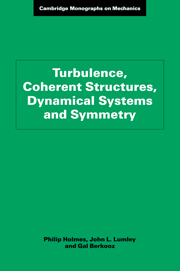1 - Introduction
Published online by Cambridge University Press: 03 February 2010
Summary
Turbulence
Turbulence is the last great unsolved problem of classical physics. Although temporarily abandoned by much of the community in favor of particle physics, the current popularity of chaos and dynamical systems theory (as well as funding problems in particle physics) is now drawing the physicists back. During the interim and up to the present, turbulence has been avidly pursued by engineers.
Turbulence has enormous intellectual fascination for physicists, engineers, and mathematicians alike. This scientific appeal stems in part from its inherent difficulty – most of the approaches that can be used on other problems in fluid mechanics are useless in turbulence. Turbulence is usually approached as a stochastic problem, yet the simplifications that can be used in statistical mechanics are not applicable – turbulence is characterised by strong dependency in space and in time, so that not much can be modelled usefully as a simple Markov process, for example. The non-linearity of turbulence is essential – linearisation destroys the problem. Many problems in fluid mechanics can be approached by supposing that the flow is irrotational – that is, that the vorticity is zero everywhere. In turbulence, the presence of vorticity is essential to the dynamics. In fact, the non-linearity, rotationality and the dimensionality interact dynamically to feed the turbulence – hence, to suppose that a realisation of the flow is two-dimensional also destroys the problem. There is more, but this is enough to make it clear that one faces the turbulence problem stripped of the usual arsenal of techniques, reduced to hand-to-hand combat.
- Type
- Chapter
- Information
- Publisher: Cambridge University PressPrint publication year: 1996



